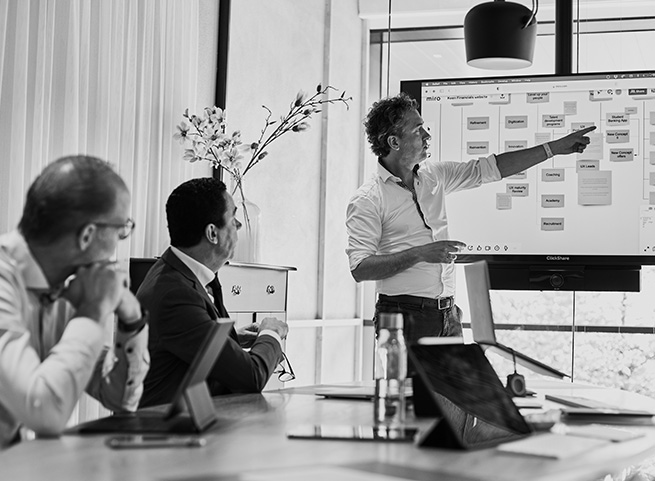Process
From business strategy to digital product

Our design process includes the goals and requirements of all stakeholders (including users) to create products that solve real problems for real users.
Our Approach

Clarity and speed; from product vision to delivery
In B2B software companies, product delivery often runs into friction. Not from a lack of ideas, but from misalignment between vision, scope, and execution. Features are built, but business impact stays vague. Internal teams work hard, but the value for clients or users gets lost along the way. That’s where Value Driven Design comes in.
This design process helps you connect the dots from strategy to product, step by step. It breaks the work down into manageable levels: from business needs and user goals to concrete service flows, interfaces, and design assets. You always know what you're solving for and how it supports your product vision. That makes decision-making faster, feedback loops shorter, and roadmaps more realistic.
For software companies, this means:
- fewer dead ends
- better alignment between teams and clients
- and a product that fits the market, faster.
For people balancing client input, team velocity, and product outcomes this is a way to make design work with the business, not at the tail end of it. No guesswork, no detours, just clear value at every stage.
You're so great at connecting the business strategy to that one button on that one screen.”

Key principles
Value for all stakeholders
Understanding what matters to users, customers, employees, with the organization is the starting point. These values become the common thread throughout the project, informing decisions and helping teams track what success really looks like; qualitatively and quantitatively.

Projects move through multiple levels
From high-level strategy to detailed execution, every project travels through a series of distinct levels: organization, business, service, product, and design assets. Each level brings different stakeholders, goals, and design challenges.

Design is an iterative process
Design doesn’t move in a straight line. It cycles through the steps Understand, Concept, Create, Observe, Implement, and Reflect.
This rhythm supports:
- better decision-making
- faster learning
- more resilient outcomes.
Especially in fast-changing environments.

Design is key at every level
Design isn’t just a delivery tool used at the end. It plays a role at each level of a project.
Whether:
- shaping strategic alignment
- structuring services
- refining product details.
This ensures that every layer contributes to the value you want to achieve.

Scalable by design
We separate what each phase needs to achieve from how it gets done. There’s no one-size-fits-all method; just a clear focus on goals. Whether you’re running workshops, prototyping, or analyzing data, the context, constraints, and expertise of your team shape the right approach. As long as the goals are met, the process stays adaptable and scalable.

